How To Care For Air Plants: Tillandsia Growing Tips
Tillandsias are fascinating beauties commonly called Air Plants because they don’t grow in soil. They’re fun to grow and have been popular in the houseplant world for years. Learn how to care for air plants and get a few ideas on displaying them.
This was initially written when I lived in Santa Barbara, CA, and grew most of my air plants outdoors. I now live in Tucson, AZ, where I grow them indoors. Most people grow them indoors, but where applicable, I’ll touch on growing them outdoors too.
Botanic Name: Tillandsia spp Common Name: Air Plants (there are many air plant species)
How To Care For Air Plants
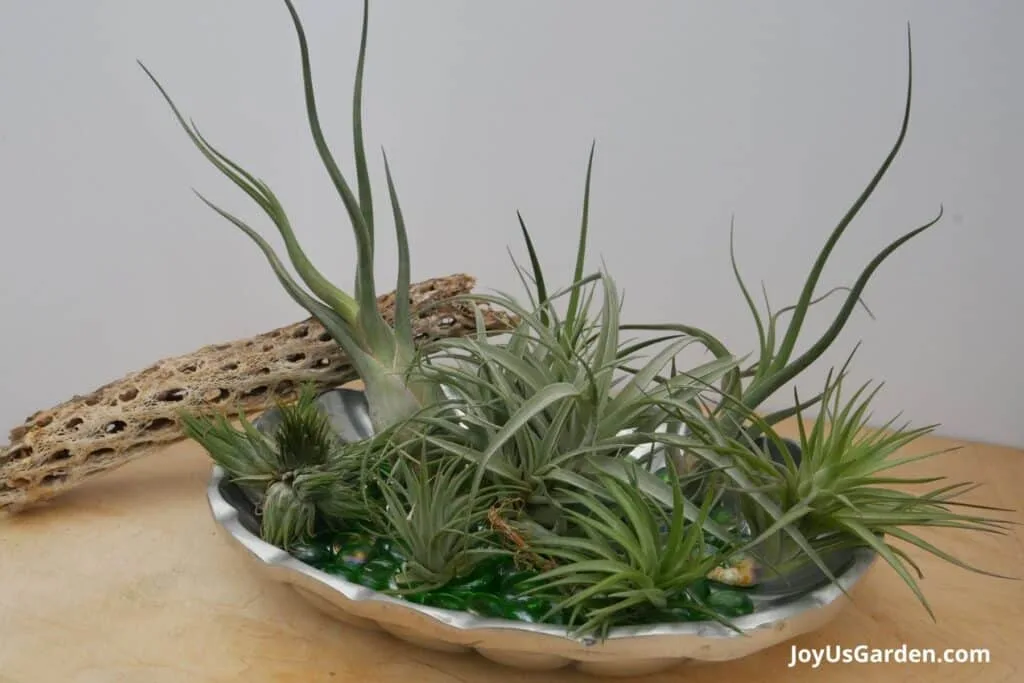
What to Know About Air Plants
These members of the bromeliad family are epiphytes, and in their natural habitat, they grow attached to other plants, usually under the canopy of a tree. Don’t worry—they’re not parasitic like mistletoe. The host plant is merely their means of support.
Did you know that Spanish moss is a tillandsia? The most common varieties of air plants sold in the houseplant trade are the Tillandsia ionantha and the Tillandsia xerographica. Both are xeric air plants, meaning they cope with low moisture. The xerographica’s leaves are thick, wide, and soft to the touch. Other easy care favs are Tillandsia stricta and Tillandsia bulbosa.
A few of them, like the popular Tillandsia cyanea or Pink Quill Plant, can grow in soil, too. If you want to learn about air plant care, please read on.
Air Plant Light Requirements
Bright, indirect light is best. Your air plants should not get hot, direct sun because they’ll burn. Full sun is fine as long as they are away from hot windows.
One of my air plants grows in my kitchen on a window sill with a northern exposure where it gets plenty of light, but no sun hits it. They require light conditions similar to pothos, dracaenas, or rubber plants. Air plants with more silver in their foliage or thick foliage can take more light.
Air plants don’t do well in low light for the long haul. I’ve heard they grow fine in adequate artificial light, but I have no experience with this.
Outdoors: I grew bromeliads in my Santa Barbara garden; some could take more light than others. Most of my tillandsias grew on my covered front porch, and enjoyed the bright morning sun filtered by a loquat tree.
How To Water Air Plants
How often you water your air plants depends on the type and your home’s environment.
Generally, spraying or soaking your air plants 1-2 times a week is best. If you’re in a drier climate like me, you may need to mist them every few days and soak them weekly. Your temperature and humidity levels throughout the year will also play a part. I always use room-temperature water when soaking or spraying my air plants.
The finer leaf varieties would benefit from a good soak more often, but don’t let them soak too long. If water sits in their centers, they’ll “mush” out. It’s important to shake off all the excess water after soaking. Your xeric air plants won’t need it as often.
I soak mine for about 30 minutes and let them dry upside down. Although air plants love moisture, they are subject to rot. You can soak them in a pail, bowl of water, or the sink.
Water quality can be confusing. Some say tap water (without excess chlorine) is acceptable; whereas some swear by bottled spring or distilled water.
I really can’t say because I’ve always used filtered water for my air plants. My home in Santa Barbara had a reverse osmosis system, and my kitchen faucet in Tucson has a filtration system.
Either way, they need nutrients from a water source, so I’m unsure about purified or distilled water. I did know someone who used purified water for his air plants but put a diluted amount of food in the water every time he soaked them.
They don’t like salts (some of us have more minerals in our tap water than others do), so if you do, let the water sit in the pail for a day or two before soaking. You could do the same with the water in the spray bottle.
Of course, rain water is best. When we get rain (rarely in the desert), I put my air plants outside.
If your air plant is blooming, it’s okay to soak the foliage but avoid soaking the flower.
Outdoors: When I lived in Santa Barbara, CA, seven blocks from the ocean, my tillandsias took in moisture from the air. I soaked them only once every 4-6 weeks, and the smaller ones get a good spray once every week or two.
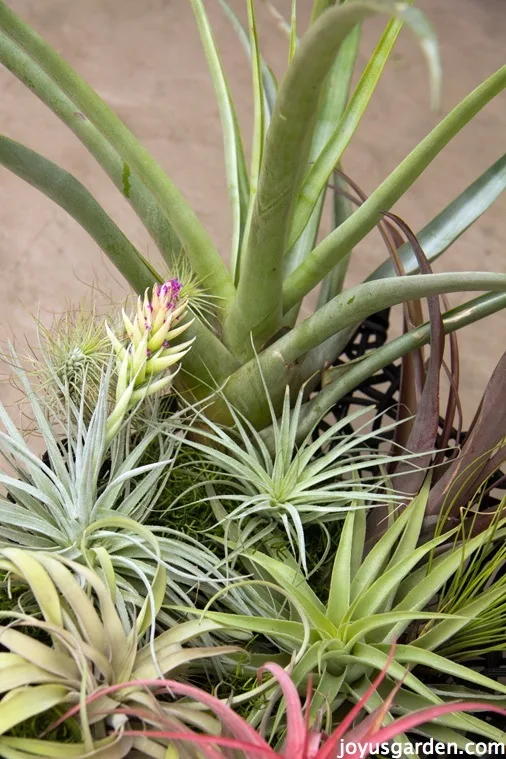
Humidity
Most of them are native to places with high humidity. Our homes tend to have drier air, so this is where regular misting (two to three times a week) helps. I live in a dry, hot climate and mist mine three times per week.
The xeric air plants, like the popular T. xerographica and T. ionantha, better tolerate low humidity.
Temperature
This is simple; there is no need to make it more complicated. They like warm conditions—temperatures no higher than 85 or 90 degrees F and none below 45.
Air Plant Fertilizer
Air plants take in nutrients through their leaves. Feeding will help them to grow a little faster, pup (make new baby plants) and perhaps flower if you do. A fertilizer specific for bromeliads is best.
Either soak them in the fertilizer mixed with water or take them to the sink and spray them (with the fertilizer in a spray bottle) if they’re attached to something like a rock or piece of wood.
I never fertilized my air plants growing outdoors in Santa Barbara because they absorbed nutrients from the air.
Air Circulation
Another simple one – they need good air circulation. Keep them out of closed terrariums.
Pruning
Not much is needed. Occasionally, I have to trim off dead lower leaves. I often do this with my micro snips because sometimes they don’t pull off easily, and I don’t want to damage the plant.
Looking for ways to display your tillandsias? Here are 10 easy ways to hang air plants.
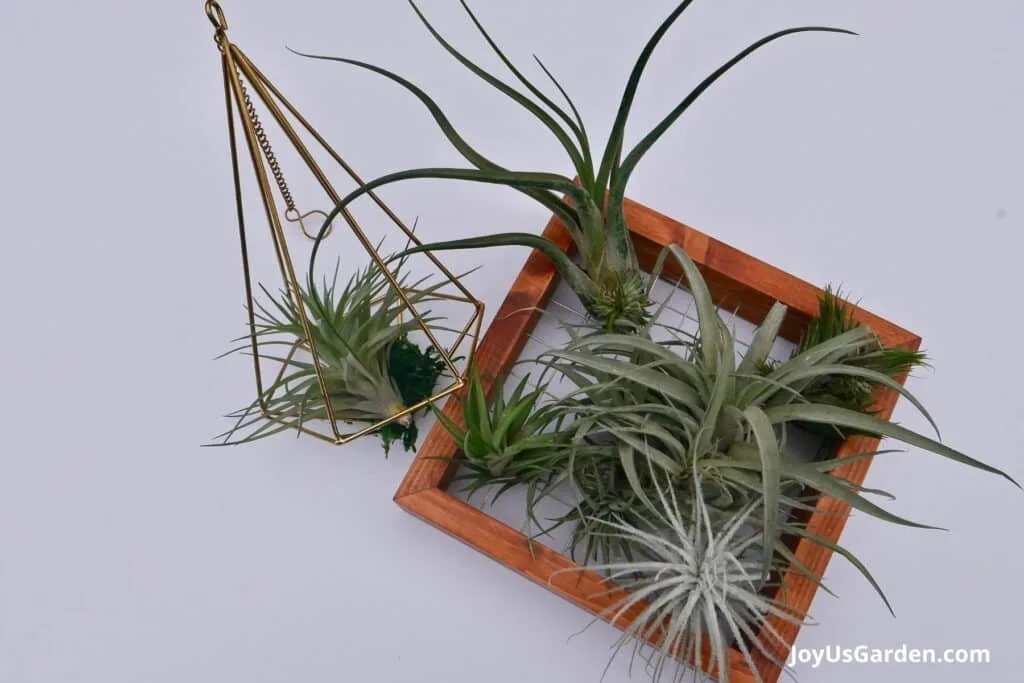
Propagation
Bromeliads, including air plants, produce pups (babies) at the base of the plant just before or after flowering. Once they’re big enough to support themselves, you can remove them by peeling them off or using a sharp blade.
Brown Tips On Air Plants
Brown leaf tips are a sign of stress. My air plants have them due to the dry desert air and lack of humidity. Other causes include not enough water and too much sun.
Pests
These resilient plants can occasionally be infested with scale insects and mealybugs. The easiest way to get rid of them is to dip a cotton swab in half water, and half rubbing alcohol and remove them.
Flowers
Air plants flower only once in their life. Different species bloom at different times and have different types of flowers.
Good news, bad news, good news. Air plants do flower. After flowering, they eventually die. The flowering process triggers pups (baby plants) to appear at the base of the plant.
You can cut the dead flower off, stalk and all. Wait until the pups are large enough to support themselves, and remove them.
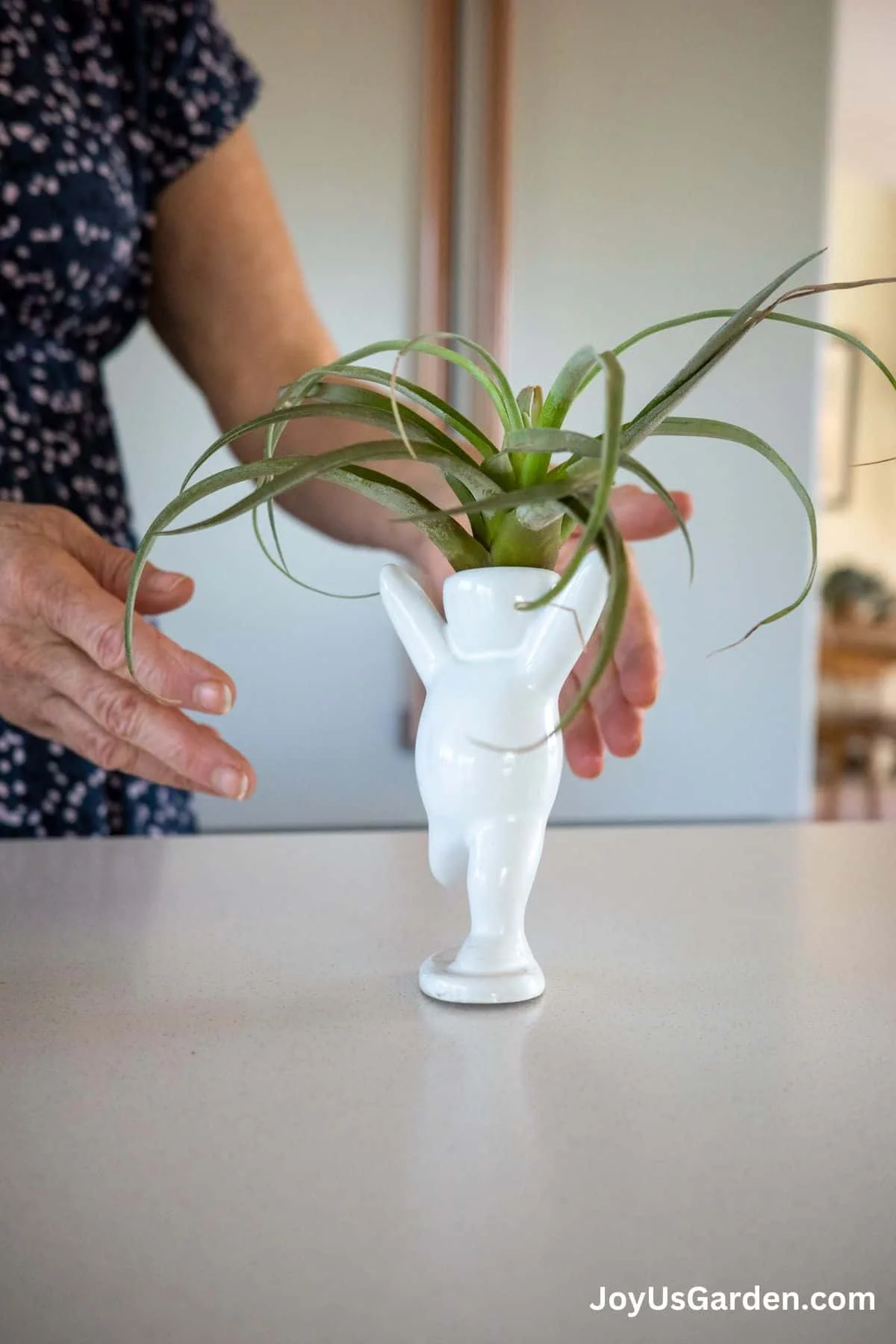
Air Plant Display Ideas
Many fun ways exist to show off your cute little air plants! They include air plant holders, air plant frames, air plant hangers, ceramic vases, air plant cradles, driftwood, cholla wood, and more.
You can also hang them with something simpler like fishing line, copper wire, or jute string. I don’t recommend covered terrariums or glass jars because they don’t provide adequate air circulation.
Air plants are great for crafting and creating and for kids as starter plants.
Toxic to Cats and Dogs
They’re reportedly non-toxic to pets.
I know from experience that cats love to munch on their crunchy leaves. Oscar, my tuxedo kitty, partially chewed three of them. My air plants have since been moved to higher grounds!
How To Care For Air Plants Video Guide
Air plants are low maintenance, grow without soil, and are fun to tuck here and there. Add one or two to your plant collection – they don’t require much if any, room!
Happy Gardening,

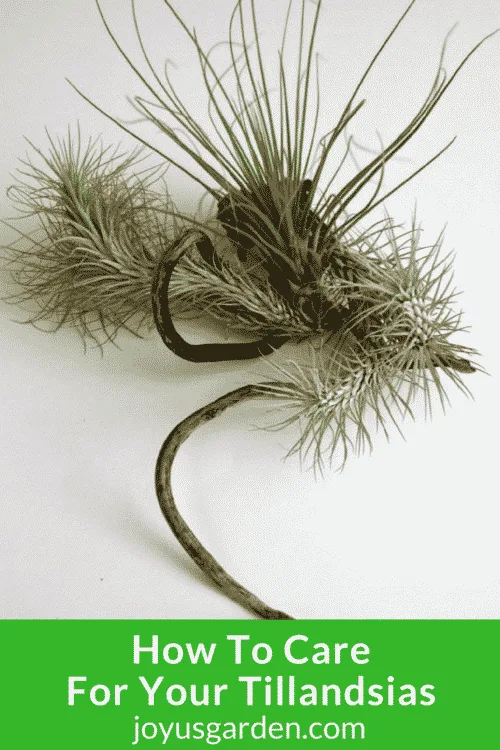

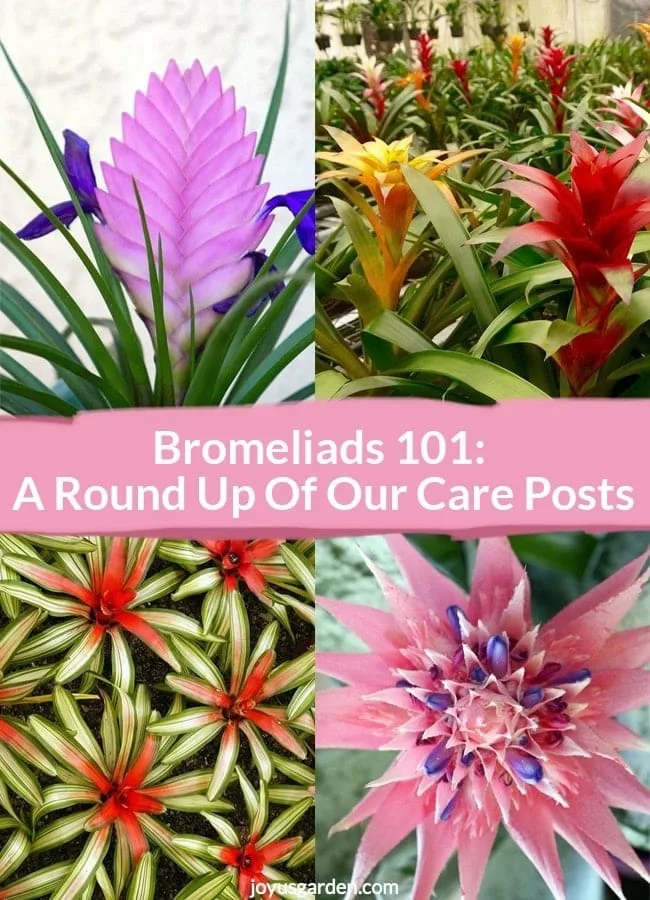
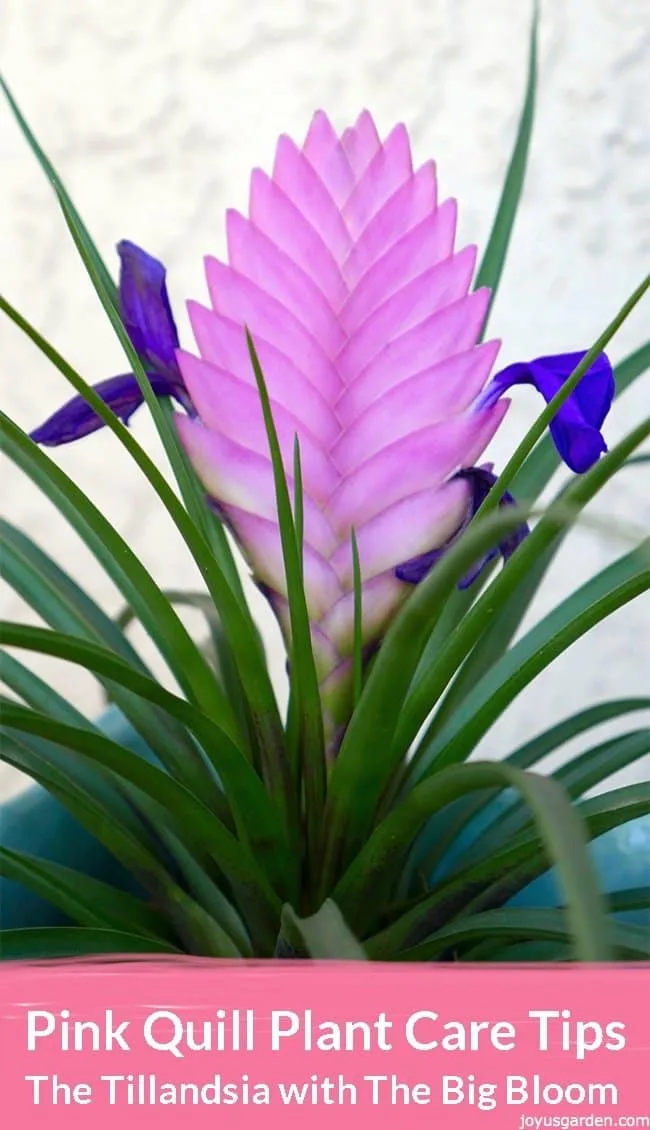
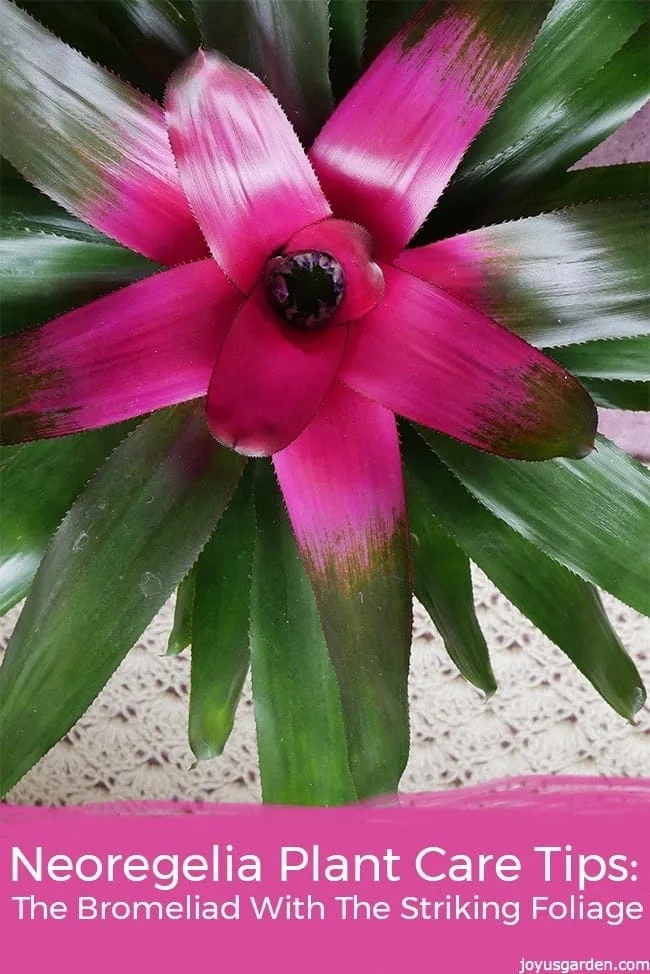
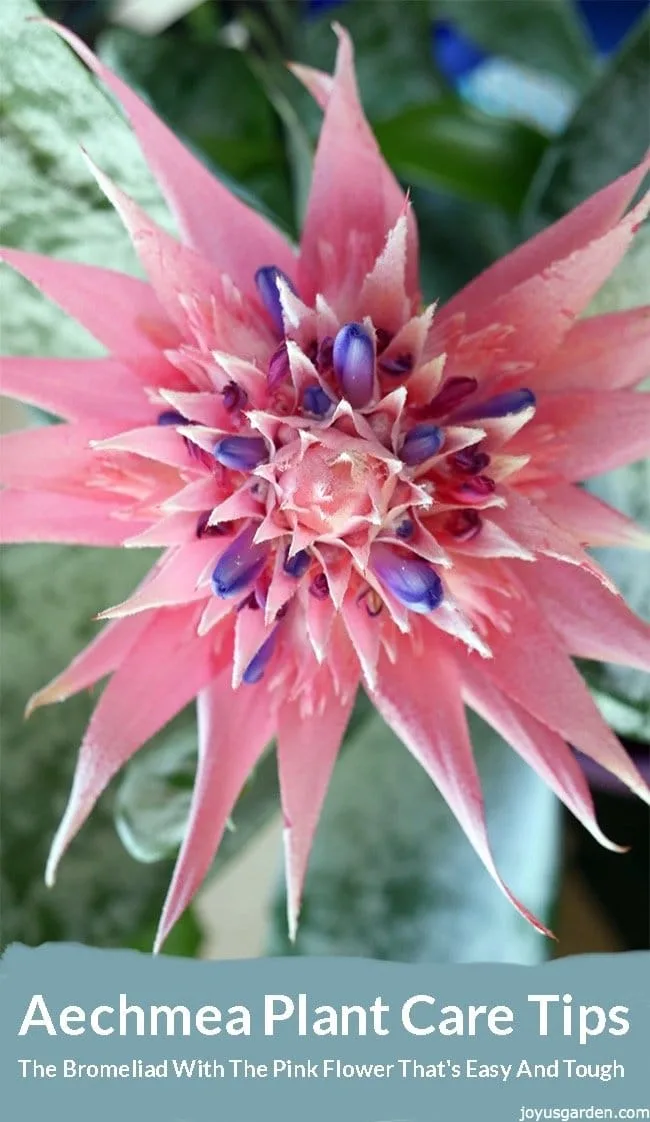
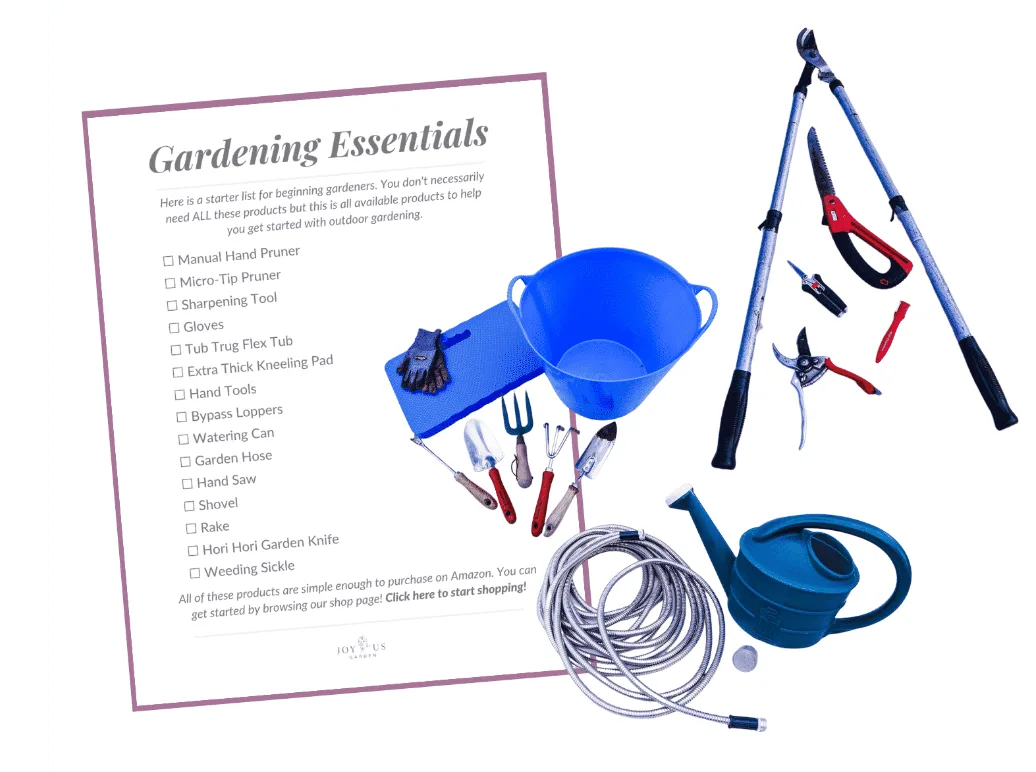
We have had a lot of luck growing our Bromeliads in our patio area. Down in Australia we can get some harsh summers, and our patio area is under some clear plastic sheeting, so they get plenty of light but no harsh, direct sun. So long as we water them regularly during the really hot months they are fine.
That’s what you need to do. Keep them protected from that hot, scorching sun or they’ll burn right out.
hello, i’m from the philippines, perfect climate for air plants. do they do well in bathrooms? i have a real small one (60 sqft) with a small window.
Hi Doni – Yes, the Phillipines is a great climate for air plants. Bathrooms are great for air plants. They don’t like strong, direct sun but they do need a decent amount of light to stay alive & grow. It’s definitely worth trying with a small one as an experiment. Put it as close to the window as possible without any sun burning them. Hope that helps! Nell
Hi there , I’m totally obsessed with your giant airplane on the right side of this video. I’m super curious because I can’t seem to find it anywhere online, what species is that!? I want it, I need it!
Justin – I know how that goes, plant lust! That’s a Tillandsia utriculata or Giant Air Plant. I’ve had it for a while now but mine is smaller than it would be in Florida because California is so dry. It’s hard to find a large one by the way. Here’s a link so you can read about it: http://www.levypreserve.org/Plant-Listings/Tillandsia-utriculata Hope that helps! Nell
Two things I’d like you to expand on. Rotting and pups. I’ve got one species I can’t seem to keep because they keep rotting. I’ve also gotten a few that have died that I found a pup in the middle of. Is there any special suggestions for caring for pups
Hi Nix – I’ve found that some varieties of air plants rot out faster & easier than others. The bulbous ones are harder for me to keep alive for any extended period of time. Soaking those for 10 or 15 minutes max seems to be the way to go. Now that I live in the desert, I’ve found the finer-leaved varieties don’t make it here (unless I had a greenhouse!). I leave the pups attached to the mother plants (even if they’re dried out) until they’re at least 2″. Then, I spray them a few times a week. Hope that helps, Nell
Hi Nell,
I am a newly owner of a few air plants, one which was given to me ina beautiful hand made stand. The other is attached to a branch which lays in a glass container. The one in the stand I can take out to soak but I was curious about soaking the one attached to the branch. Do I soak the whole thing and then let it dry out before putting it back in the glass? Also, what does it mean if they are a little silver looking as opposed to green. Is that a bad thing? Thanks so much!
Hi April – Welcome to the world of air plants! 1st off, the silver is normal – it’s just a different species. Yes, you can soak it & it it dry before you put it back. Nell
Hi Neil
I HAVE been given a tillandsia cyanea which I have indoors in UK
It was a lovely pink but after having it for a month or two it is now starting to turn a green colour is this bad and is it starting to die?
Hi Linda – No, it’s fine. Your quill is just going through its normal growth cycle. It’ll eventually die but will stay that color color for a while. More info on that: https://www.joyusgarden.com/pink-quill-plant-care/ Nell